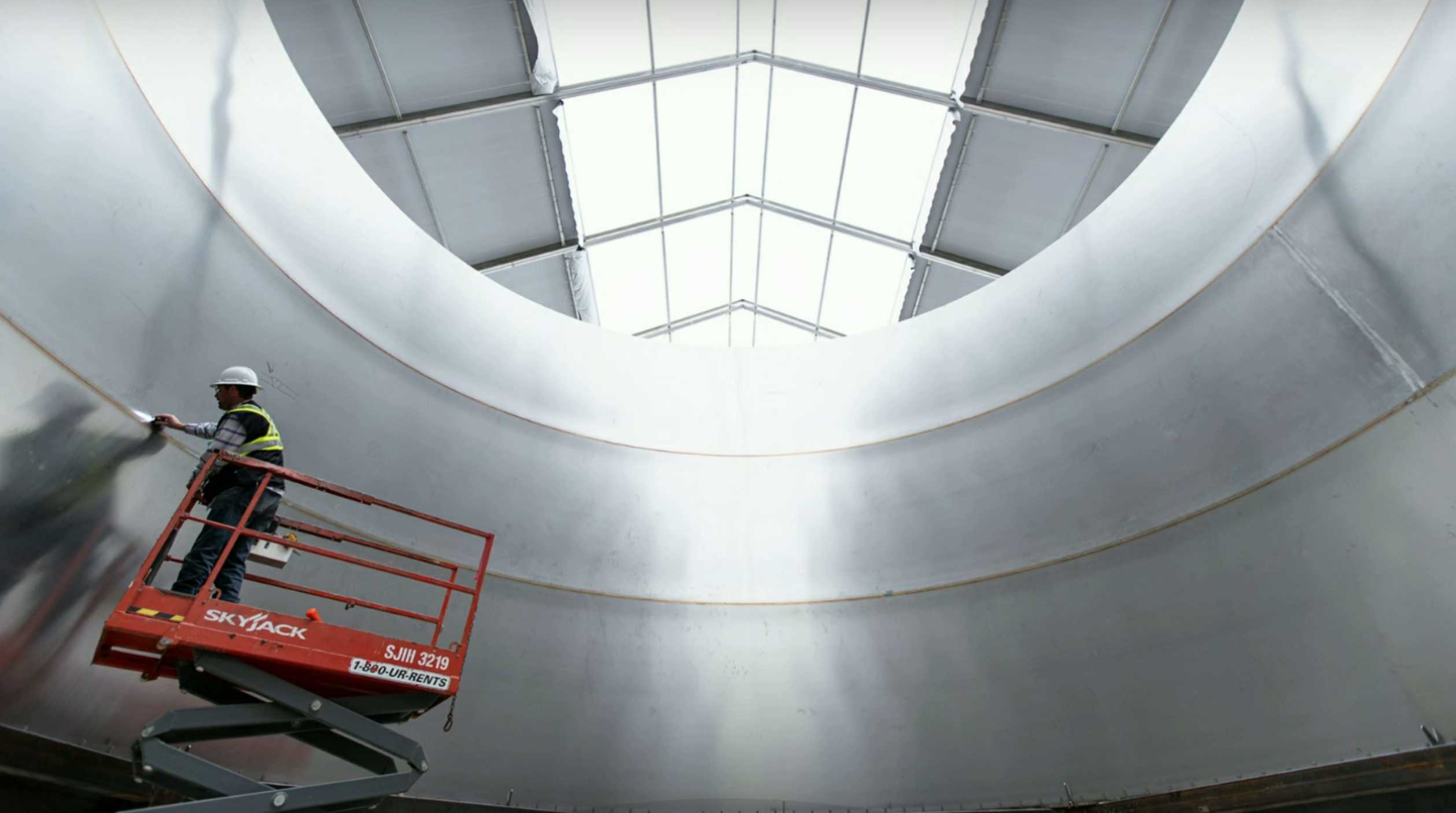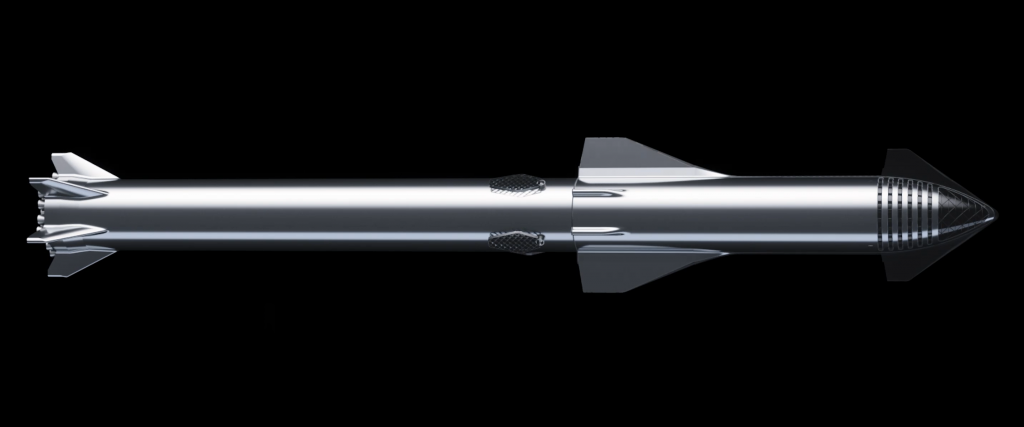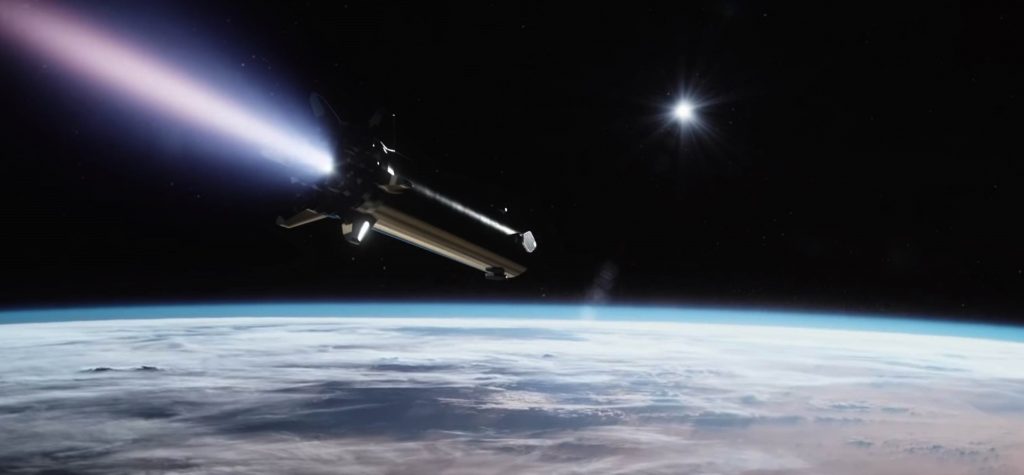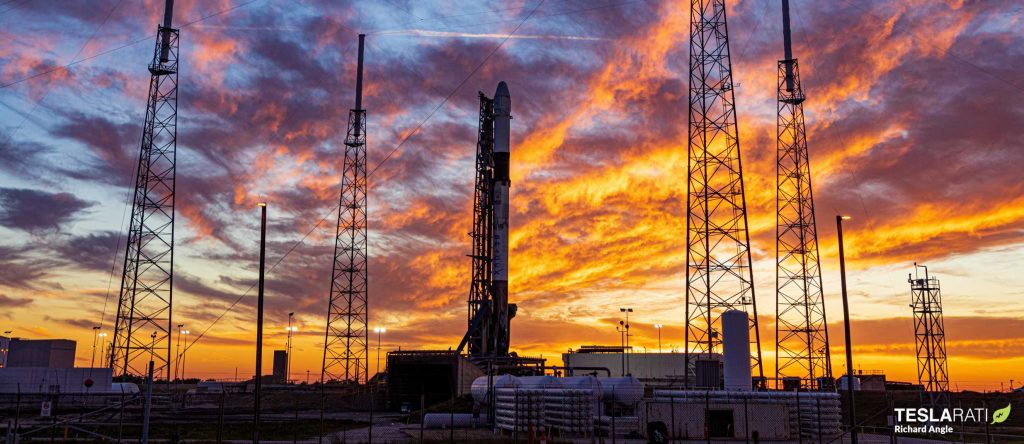

News
SpaceX tweaks Starship's Super Heavy rocket booster as design continues to evolve
CEO Elon Musk says that SpaceX continues to evolve the design of its next-generation Starship spacecraft and Super Heavy rocket booster, a process of continuous improvement the company has successfully used for a decade.
Designed to place more than 100 metric tons (220,000 lb) of payload into Low Earth Orbit (LEO), Starship would effectively double (and possibly triple) the expendable performance of SpaceX’s existing Falcon Heavy rocket. Critically, it would be able to dramatically outclass Falcon Heavy (and Falcon 9 even more so) in a fully reusable configuration, meaning that both the Starship upper stage and Super Heavy booster could be recovered and reused.
Since SpaceX first publicly revealed its next-generation launch vehicle and Mars ambitions in September 2016, the path to realizing the dream of a fully-reusable super heavy-lift launch vehicle has been decidedly windy. After making the radical decision to move entirely from carbon composites to stainless steel in late 2018, the Starship design has remained relatively similar, coalescing around a specific concept that has matured to full-scale tank tests. Now, Musk says that Super Heavy’s design was tweaked slightly to make the booster even taller than before, while he later noted that Starship’s design also continues to “[evolve] rapidly.”
According to Musk, the Super Heavy booster will be stretched by a steel ring or two, reaching a new height of ~70m (230 ft). In other words, Starship’s first stage alone will measure as tall as the entirety of a Falcon 9 or Falcon Heavy rocket – first stage, second stage, and payload fairing included. Powered by up to 37 Raptor engines, a Super Heavy booster could produce more than ~90,000 kN (19,600,000 lbf) of thrust at liftoff – an incredible 12 times as much thrust as SpaceX’s workhorse Falcon 9 rocket.
Starship, meanwhile, will be a beast of an orbital-class upper stage on its own, measuring at least 50m (165 ft) tall and weighing some 1350 metric tons (3 million lb) fully-fueled. Stacked on top of Super Heavy, a Starship ‘stack’ would reach a staggering 120m (395 ft) and weigh more than 5000 metric tons (11 million lb) once loaded with liquid oxygen and methane propellant.


In simple terms, Starship/Super Heavy should be the tallest, heaviest, and most powerful launch vehicle ever assembled once it heads to the launch pad for the first time. While SpaceX is making great daily progress its ever-growing South Texas rocket factory, built up from next to nothing in a matter of months, it could still be quite some time before that milestone is within reach.
SpaceX’s process of continuously tweaking and improving the design and production of its rockets does typically have that effect. However, it’s more a symptom of the company’s approach to hardware and software development. Instead of working slowly and carefully from nothing to a preconceived finished product, SpaceX typically seeks to design, build, and test the minimum viable product, gradually improving (or entirely replacing) past ideas, designs, and hardware until overarching goals are fully achieved.
With Falcon 9 and Falcon Heavy, this meant beginning with Falcon 1, a dead-simple proof-of-concept rocket. After successfully reaching orbit, SpaceX expanded its Falcon 9 development program, itself focused initially on the minimum viable product – a full-scale expendable rocket. Since Elon Musk founded SpaceX in 2002, the goal has always been to build a fully-reusable rocket – the company has simply chosen the far more sustainable and practical approach of tackling only a select few problems at a time.

The Starship and Falcon development programs aren’t directly comparable but it’s safe to say that Starship is currently still in the very early stages of hardware development. Shortly after revealing Super Heavy’s height growth, Musk noted that Starship’s design is also being tweaked.
Sketching out a rough series of upgrades that could feasibly be made to the reusable spacecraft’s currently design, Musk thinks that Starship’s conical tank domes (and thus Super Heavy’s, too) could be flattened. That might allow an extra ~3m (10 ft) of propellant tank space to be squeezed into the same 50m Starship length, improving performance by simply using the vehicle’s fixed volume more efficiently.
With a nascent factory quite literally churning out Starship hardware, these tweaks are a whole different animal. Thanks to data and insight gathered from testing actual full-scale Starship tanks, up to and including fully-assembled tank sections, SpaceX will be able to guide its continuous improvement with even greater precision, honing in on the next-generation rocket’s orbital launch debut.
Check out Teslarati’s Marketplace! We offer Tesla accessories, including for the Tesla Cybertruck and Tesla Model 3.

Elon Musk
Elon Musk and Tesla AI Director share insights after empty driver seat Robotaxi rides
The executives’ unoccupied tests hint at the rapid progress of Tesla’s unsupervised Robotaxi efforts.

Tesla CEO Elon Musk and AI Director Ashok Elluswamy celebrated Christmas Eve by sharing personal experiences with Robotaxi vehicles that had no safety monitor or occupant in the driver’s seat. Musk described the system’s “perfect driving” around Austin, while Elluswamy posted video from the back seat, calling it “an amazing experience.”
The executives’ unoccupied tests hint at the rapid progress of Tesla’s unsupervised Robotaxi efforts.
Elon and Ashok’s firsthand Robotaxi insights
Prior to Musk and the Tesla AI Director’s posts, sightings of unmanned Teslas navigating public roads were widely shared on social media. One such vehicle was spotted in Austin, Texas, which Elon Musk acknowleged by stating that “Testing is underway with no occupants in the car.”
Based on his Christmas Eve post, Musk seemed to have tested an unmanned Tesla himself. “A Tesla with no safety monitor in the car and me sitting in the passenger seat took me all around Austin on Sunday with perfect driving,” Musk wrote in his post.
Elluswamy responded with a 2-minute video showing himself in the rear of an unmanned Tesla. The video featured the vehicle’s empty front seats, as well as its smooth handling through real-world traffic. He captioned his video with the words, “It’s an amazing experience!”
Towards Unsupervised operations
During an xAI Hackathon earlier this month, Elon Musk mentioned that Tesla owed be removing Safety Monitors from its Robotaxis in Austin in just three weeks. “Unsupervised is pretty much solved at this point. So there will be Tesla Robotaxis operating in Austin with no one in them. Not even anyone in the passenger seat in about three weeks,” he said. Musk echoed similar estimates at the 2025 Annual Shareholder Meeting and the Q3 2025 earnings call.
Considering the insights that were posted Musk and Elluswamy, it does appear that Tesla is working hard towards operating its Robotaxis with no safety monitors. This is quite impressive considering that the service was launched just earlier this year.
Elon Musk
Starlink passes 9 million active customers just weeks after hitting 8 million
The milestone highlights the accelerating growth of Starlink, which has now been adding over 20,000 new users per day.

SpaceX’s Starlink satellite internet service has continued its rapid global expansion, surpassing 9 million active customers just weeks after crossing the 8 million mark.
The milestone highlights the accelerating growth of Starlink, which has now been adding over 20,000 new users per day.
9 million customers
In a post on X, SpaceX stated that Starlink now serves over 9 million active users across 155 countries, territories, and markets. The company reached 8 million customers in early November, meaning it added roughly 1 million subscribers in under seven weeks, or about 21,275 new users on average per day.
“Starlink is connecting more than 9M active customers with high-speed internet across 155 countries, territories, and many other markets,” Starlink wrote in a post on its official X account. SpaceX President Gwynne Shotwell also celebrated the milestone on X. “A huge thank you to all of our customers and congrats to the Starlink team for such an incredible product,” she wrote.
That growth rate reflects both rising demand for broadband in underserved regions and Starlink’s expanding satellite constellation, which now includes more than 9,000 low-Earth-orbit satellites designed to deliver high-speed, low-latency internet worldwide.
Starlink’s momentum
Starlink’s momentum has been building up. SpaceX reported 4.6 million Starlink customers in December 2024, followed by 7 million by August 2025, and 8 million customers in November. Independent data also suggests Starlink usage is rising sharply, with Cloudflare reporting that global web traffic from Starlink users more than doubled in 2025, as noted in an Insider report.
Starlink’s momentum is increasingly tied to SpaceX’s broader financial outlook. Elon Musk has said the satellite network is “by far” the company’s largest revenue driver, and reports suggest SpaceX may be positioning itself for an initial public offering as soon as next year, with valuations estimated as high as $1.5 trillion. Musk has also suggested in the past that Starlink could have its own IPO in the future.
News
NVIDIA Director of Robotics: Tesla FSD v14 is the first AI to pass the “Physical Turing Test”
After testing FSD v14, Fan stated that his experience with FSD felt magical at first, but it soon started to feel like a routine.

NVIDIA Director of Robotics Jim Fan has praised Tesla’s Full Self-Driving (Supervised) v14 as the first AI to pass what he described as a “Physical Turing Test.”
After testing FSD v14, Fan stated that his experience with FSD felt magical at first, but it soon started to feel like a routine. And just like smartphones today, removing it now would “actively hurt.”
Jim Fan’s hands-on FSD v14 impressions
Fan, a leading researcher in embodied AI who is currently solving Physical AI at NVIDIA and spearheading the company’s Project GR00T initiative, noted that he actually was late to the Tesla game. He was, however, one of the first to try out FSD v14.
“I was very late to own a Tesla but among the earliest to try out FSD v14. It’s perhaps the first time I experience an AI that passes the Physical Turing Test: after a long day at work, you press a button, lay back, and couldn’t tell if a neural net or a human drove you home,” Fan wrote in a post on X.
Fan added: “Despite knowing exactly how robot learning works, I still find it magical watching the steering wheel turn by itself. First it feels surreal, next it becomes routine. Then, like the smartphone, taking it away actively hurts. This is how humanity gets rewired and glued to god-like technologies.”
The Physical Turing Test
The original Turing Test was conceived by Alan Turing in 1950, and it was aimed at determining if a machine could exhibit behavior that is equivalent to or indistinguishable from a human. By focusing on text-based conversations, the original Turing Test set a high bar for natural language processing and machine learning.
This test has been passed by today’s large language models. However, the capability to converse in a humanlike manner is a completely different challenge from performing real-world problem-solving or physical interactions. Thus, Fan introduced the Physical Turing Test, which challenges AI systems to demonstrate intelligence through physical actions.
Based on Fan’s comments, Tesla has demonstrated these intelligent physical actions with FSD v14. Elon Musk agreed with the NVIDIA executive, stating in a post on X that with FSD v14, “you can sense the sentience maturing.” Musk also praised Tesla AI, calling it the best “real-world AI” today.








